The Villa makes it easy to get lost
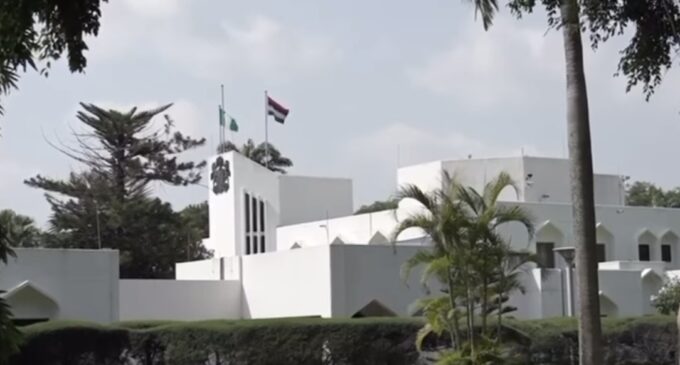
When General Ibrahim Badamosi Babangida GCFR (82) moved the seat of the central government from Lagos to Abuja on December 12, 1991, he did so to hide himself. You cant be active when you are hiding.
On August 17, 1991, he commissioned the third Mainland Bridge in Lagos. The bridge is the biggest project ever established in Lagos and since the commissioning of that bridge by General Babangida, no Nigerian leader has sited any other bigger project in Lagos.
On August 12, 1975, Brigadier General Murtala Mohammed the then head of state inaugurated a panel on the issue of transferring the nation’s capital out of Lagos. The panel was given up to six months to submit its report and make recommendations. The panel was directed to examine the desirability of retaining Lagos as the Federal capital of Nigeria. The panel was further directed to recommend a suitable alternative location should it determine that the Federal capital be moved out of Lagos. The panel was headed by Justice Akinola Aguda (10 June 1923- 5 September 2001). Justice Aguda was from Akure in Ondo state.
Dr. Aguda had his education at St. David’s School, Akure, Government College, Ibadan, Higher College, Yaba, London School of Economics and Political Science, University of London, England and School of Oriental and African Studies, University of London. He was the former Chief Justice of Botswana, administrator-general and public trustee, Western Nigeria, 1961-1964, legal draftsman, 1964-1967, dean, Faculty of Law, University of Ife, 1965-1966, director of Public Persecutions, Nigeria, 1967-1968, solicitor-general and Permanent-Secretary, Western Nigeria Ministry of Justice, 1968, Judge, High Court, Western State of Nigeria, 1968-1972, later Chief Judge, Ondo state until 1978, appointed director, Institute of Advanced Legal Studies, 1978.
Unfortunately, he did not make the list to the Supreme Court. Other members of the committee were Mohammed Isma (Secretary), Ajato Gandonu, a geography professor and town planner, Tai Solarin, an educator and social critic, Owen Feibai, O.K. Ogan, and Pedro Martins, the first Catholic Chaplain of the Nigerian Army.
On February 3, 1976, General Murtala Mohammed made a broadcast to the nation on the conclusions of the meeting of the Supreme Military Council. On the issue of the new Federal Capital, the General declared “the panel on the local of the Federal Capital has recommended that the nation’s should move out of Lagos to a Federal Territory of about 8,000 square Kilometre in the central part of the country. The Supreme Military Council has accepted the recommendations. The site recommended satisfied the Panel’s criteria of centrality, good and tolerable climate, land availability and use, adequate water supply, low population density, physical planning convenience, security and multi access possibility. The area is not within the control of any other major ethnic groups in the country. We believe that a new Capital created on such virgin land, as suggested, will be for all Nigerians a symbol of their oneness and unity. The few local inhabitants in the area, who need to be resettled outside the area, will be resettled in lace of their choice, at Government expense.
In order to avoid land speculation in the area, a Decree is being promulgated immediately to vest all land in the Federal Territory in the Federal Government. A Federal Capital Development Authority is to be established to plan and administer the territory. An Administrator for the Federal Territory will soon be appointed to provide municipal services in the area. The Chairman of the Federal Capital Development Authority is expected to start work at once but the movement of the seat of the Federal Government out of Lagos is expected to take some ten to fifteen years. The Present Administration is firmly committed to ensuring that the necessary groundwork is completed and construction work started within the next four years.
Lagos will, in the foreseeable future, remain the nation’s commercial capital and one of it nerve centres. But in terms of servicing the present infrastructure alone, the colossal amount and effort required will be such that Lagos state will not be able to cope. It will even be unfair to expect the State to bear this heavy burden on its own. It is therefore necessary for the Federal Government to continue to sustain the substantial investments in the area. The port facilities and other economic activities in the Lagos area have to be expanded. There is need to in the circumstance for the Federal Government to maintain special defence and security arrangements in Lagos, which will henceforth be designated a “special area”. These arrangements will be carefully worked out and written into the new Constitution. Kaduna and Port Harcourt are to be accorded similar status and designated “special areas” under the new Constitution”.
I want to believe that General Murtala Mohammed meant well by that declaration. But if we are to go by the words of the General, which he made 10days before he was assassinated, the Central Government has failed Lagos. The Central Government also failed Kaduna and Port Harcourt. The 1979 Constitution forgot Lagos. In short the Central Government defaulted on its 1976 pledge to Lagos.
Since General Babangida moved the seat of government from Lagos to Abuja on December 12, 1991, Lagos has been abandoned by the Central government. It should not be so. Although Lagos is constantly flattered as the commercial nerve centre of Nigeria, the expected facilities to be provided in Lagos are beyond the capability of the Lagos state government.
Fortunately we have a former of governor of Lagos state who is now the President of Nigeria. He too, has been one of those who had complained about the neglect of Lagos in the past. The expectation is that this anomaly will be corrected by him so that Lagos will get its dues.
For example, Tanzania moved its capital to Dodoma, yet Tanzania had not abandoned Dar es Salam in constructing infrastructure, same with Cote d’ivoire that moved its capital to Yamoussoukro. Till today Cote d’ivoire is still developing Abidjan. Brazil moved its capital to Brasilia but till today the Brazilian government had not abandoned its responsibilities to Rio de Janeiro.
In 1959, Pakistan made the strategic decision to relocate its capital from the southern metropolis of Karachi to the northern city of Islamabad. Although construction did not commence until 1961, the establishment of this new capital was seen as an emblem of the diverse Pakistani populace, detached from Karachi’s bustling commercial activities, yet accessible from all corners of the nation.
Russia’s historical oscillation between Moscow and St. Petersburg as its capital cities is noteworthy. St. Petersburg, founded by Peter the Great in 1703, held the capital status from 1712 to 1918 when the government ultimately reverted to Moscow. This transition was officially authorized by the 4th all-Russian Congress of the Soviets on March 16, 1918, amid the volatile backdrop of the Russian Revolution. The congress based its decision on the evolving dynamics in Petrograd (St. Petersburg) and deemed Moscow a more suitable temporary capital for the Russian Socialist Federative Soviet Republic.
The neglect of Lagos by the central government is most disastrous. I have read the report of Dr. Akinola Aguda’s Panel, there is no part in that report that recommended that Lagos should be abandoned. The panel recommended “gradual movement”, envisaging total movement to last at least 100 years. If we have to observe, the central government made the first part of its movement in 1980 under President Shehu Aliyu Usman Shagari and by 1991, it has completely moved to Abuja, that is a space of 11 years. That speed of movement ruined Nigeria’s economy, coupled with our adoption of the Structural Adjustment Programme (SAP). Abuja was given a hasty development at the detriment of other parts of the country.
On April 22, 1990, Major Gideon Gwaza Orkar (October 4, 1952 – July 27, 1990) launched a major unsuccessful coup attempt on General Babangida in Lagos. He survived but he lost his able ADC, Colonel U.K. Bello in the coup.
Lt Col Usman K Bello was an indigene of Niger State. Gwari by tribe, he started his Officer Cadet training with the 9th Regular Combatant Course in January 1971 at the Nigerian Defence Academy Kaduna. He was commissioned in the rank of Second Lieutenant in June 1973 and posted to the Recce Regiment.
He attended several courses in the Nigerian Army School of Infantry and some Armour officers’ courses in Britain and the United States.
He was ADC to Brigadier Shehu Musa Yar Adua GCON (5 March 1943 – 8 December 1997) when the latter was Chief of Staff Supreme Headquarters. He was also the Brigade Major 24 Armoured Brigade before he proceeded to the Command and Staff College (CSC) for his Senior Division Course. At CSC he did very well and came first in order of merit.
Bello was not a university graduate but he put all his energy into making a career of the army. His last posting before being deployed to Dodan Barracks was as the CO of the Recce Battalion in Kaduna. As a Lieutenant Colonel, he replaced Major Sabo Dasuki (69) as ADC to President Babangida. Even as ADC he sought permission to undergo airborne training in the Nigerian Army School of Infantry. This was not a normal practice for one at his age and rank
Bello commanded tremendous amount of respect from all ranks. General Babangida had a lot of confidence in him.
After his death, he was replaced by Colonel Nuhu Bamali who later died in a plane crash along with ten Generals on September 17, 2006 at the Obudu Cattle Ranch.
Captain Bade Omowa from Oka, Akoko in Ondo state and others played a major role in rescuing General Babangida and his family from Dodan Barrcks, Ikoyi, Lagos to National Arts Theatre, Iganmu, Lagos during the failed coup on the 9th April, 1990. After the coup attempt, it dawned on General Babangida that Dodan Barracks was no longer safe for him. On December 12, 1991, he finally moved the seat of Government to Abuja.
Let us take a close look at the seat of government in France, Great Britain, United States of America and South Korea in comparison to our own- the Presidential Villa which we refer to often as Aso Rock in Abuja.
Downing Street is the seat of the British Government. It was named after Sir George Downing (1623-1684). It is a street in the West End of London- West Minister, in short in central London.
Along the street, the British Foreign Ministry is located, the official residence and office of the British Prime Minister is also located there. It has been so since the time of Sir Robert Walpole (1721-1742).
Tourists go there often. It belongs to the British people. Prime ministers often test their popularity or the acceptability of their policies, through the mood of those who gather often along that street.
The Elysee Palace in Paris has been the official residence of the president of France since 1873. The palace is on the Rue du Faubourg Saint-Honore. It was built in 1718 and was once property of Mme de Pampadour. The Landlord of the Palace is France and the first tenant was Louis XVIII brother of King Louis XVI.
General Charles De Gaulle (1890-1970) once said that ElyseePalace is the only barometer through which he feels the heat of France. ElyseePalace is a pride to every Frenchman. Pictures of the Palace form part of the architecture of France. If you get to Paris and you want to get to the Palace, just to view the place or photograph it, you will be welcome.
When the United States government moved to the largely unfinished new capital at Washington, DC, in 1800, President John Adams and his wife Abigail entered with some trepidation into the executive mansion.
After the design competition had been won by Hoban, construction began in1792 and the original structure was built by 1800 at an estimated cost of $400,000.
When President Thomas Jefferson (who had submitted a lasting design) moved into the White House in 1801, he began energetically planning additions, but these were not finished until after the mansion was partly burnt by the British during the War of 1812. It was painted white for the first time under James Madison, filled with elegant French furniture by James Monroe and graced with indoor plumbing by Andrew Jackson and given the official designation ‘White House’ by Theodore Roosevelt.
The White House contains 54 major rooms, including porticos; measures 168 feet in length by 152 feet in width. It is surrounded by more than 18 acres of landscaped lawns and gardens.
The White House is normally open from 10 a.m. to 12.00 noon Tuesday to Saturday and from 10 a.m. to 2 p.m. in summer. Only the public rooms on the ground floor and state floor may be visited. As everyone knows, it is the residence of the President of the United States.
Cheong Wa Dae (also known as the Blue House in English, is a public park that formerly served as the presidential residence and the diplomatic reception halls of South Korea from 1948 to 2022. It is located in the Jongno district of the South Korean capital Seoul.
Cheong Wa Dae is a complex of multiple buildings built largely in the traditional Korean architectural style with some modern architectural elements and facilities. Cheong Wa Dae now consists of the Main Office Hall Bon-gwan, the Presidential Residence, the State Reception House Yeongbin-gwan, the Chunchu-gwan, Press Hall, and the Secretariat Buildings. The entire complex covers approximately 250,000 square metres or 62 acres.
Cheong Wa Dae was built upon the site of the royal garden of the Joseon Dynasty (1392–1910). While the Blue House served as an executive office, it was one of the most protected official residences in Asia. Upon the inauguration of President Yoon Suk Yeol in May 2022, Cheong Wa Dae was relieved of its duties as the official residence and executive office of the president and fully converted to a public park. The president’s office and residence was moved to the Ministry of National Defense building in the Yongsan District of Seoul.
When Princess Diana of Wales died on 31 August 1997, the public outcry by the British people, forced Queen Elizabeth II to raise the British flag to fly at Buckingham Palace to mourn her. And this is because, the Queen got the mood of the British people, because her residence was within the public reach.
Buckingham Palace is a royal residence in London and the administrative headquarters of the monarch of the United Kingdom. Located in the City of Westminster, the palace is often at the centre of state occasions and royal hospitality. It has been a focal point for the British people at times of national rejoicing and mourning.
Originally known as Buckingham House, the building at the core of today’s palace was a large townhouse built for the Duke of Buckingham in 1703 on a site that had been in private ownership for at least 150 years. It was acquired by King George III in 1761 as a private residence for Queen Charlotte and became known as The Queen’s House. During the 19th century it was enlarged by architects John Nash and Edward Blore, who constructed three wings around a central courtyard. Buckingham Palace became the London residence of the British monarch on the accession of Queen Victoria in 1837.
The last major structural additions were made in the late 19th and early 20th centuries, including the East Front, which contains the well-known balcony on which the royal family traditionally appears to greet crowds. A German bomb destroyed the palace chapel during the Second World War; the Queen’s Gallery was built on the site and opened to the public in 1962 to exhibit works of art from the Royal Collection.
The original early-19th-century interior designs, many of which survive, include widespread use of brightly coloured scagliola and blue and pink lapis, on the advice of Charles Long. King Edward VII oversaw a partial redecoration in a Belle Époque cream and gold colour scheme. Many smaller reception rooms are furnished in the Chinese regency style with furniture and fittings brought from the Royal Pavilion at Brighton and from Carlton House. The palace has 775 rooms, and the garden is the largest private garden in London. The state rooms, used for official and state entertaining, are open to the public each year for most of August and September and on some days in winter and spring.
By the time General Babangida landed in the Presidential Villa in Abuja on that sunny day, there was no accommodation for his top aides.
Between 1991 till he handed over power to his appointed successor, Chief Ernest Adegunle Oladeinde Shonekan , General Babangida was much concerned about his personal safety. He became less active in the Presidential Villa in Abuja and was not able to govern properly, hence the terrible mistakes he made in the last months of his regime, including the annulment of the presidential election, which is still affecting his image.
He glued himself to the villa, constructing structures in the villa and other parts of Abuja while the rest of the country got poorer.
IBB and his other successors made Abuja an El Dorado while the rest of the country wallowed in poverty and neglect.
You need to see the villa; it was designed purely to cut off the people. It is anti-people. It occupies one-tenth of the whole Central District of Abuja and it is one of the biggest Presidential Villas in the world with a large undeveloped space. If you enter the villa, it is as if you are in a golden palace.
The tragedy in our presidential system of government is that the people really have no role. Once they vote, they are completely ignored until the next four years.
It is only the executive and legislature that profit from our democracy.
Take a look at the 2024 Federal Government budget and the very huge allocation given to the National Assembly. It is still the biggest allocation ever made to the second arm of government since 1999 and they made that allocation themselves out of greed. The sad aspect of it is that they will get away with it.
We have a system of government that slights the people and a Presidential Villa that has completely fenced them.
In 1997, an organization known as Youth Earnestly Ask for Abacha (YEAA) was formed. The organization was led by a young man known as Daniel Kanu, who placed billboards around the country, publicized advertisements in the media and sponsored editorials to encourage support for General Sani Abacha. The support of the former military leader culminated in 1998 with what is now famously remembered as 2 Million Man March.
The campaign, held at what is now known as Eagle Square in Abuja, was to force General Sani Abacha to remove his military toga and stand for an election as Nigerian President. After the rally led by Kanu, General Abacha held a meeting of the Federal Executive Council (FEC) the following day. At the meeting, one of the Ministers asked General Sani Abacha, whether or not he enjoyed “the noise” that came from the rally the previous night. To everyone’s surprise General Abacha claimed ignorance of the rally and declared that he enjoyed a good sleep the previous night.
At the meeting, I sat close to his spokesman, late David Attah, a colleague and a close friend. I asked David his opinion of General Abacha’s statement. David said General Abacha could be right because of the way THE VILLA was built.
The Germans who built the Presidential Villa built a garrison that cut off the people. Being the last bus stop, THE VILLA was constructed to isolate the leader. THE VILLA was not built to entertain protests or dissensions. If you are in THE VILLA you will think there are no problems in the world. It is not a theatre built to solve any problems. It is so easy to get lost in THE VILLA if you are the President. You will only be surrounded by aides and friends who often give false information so as to protect their positions, interests and loyalty.
Failure awaits any President who relies fully on what obtains in THE VILLA. The President must create a platform where he can get correct information outside THE VILLA on the true situation in the country.
Afterwards Democracy is about WE THE PEOPLE.
Views expressed by contributors are strictly personal and not of TheCable.


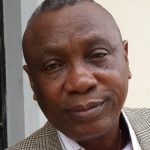





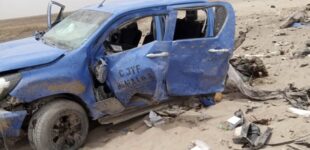

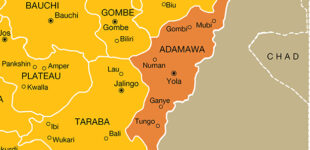
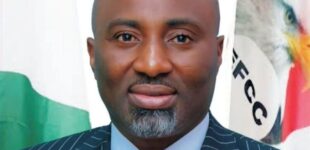
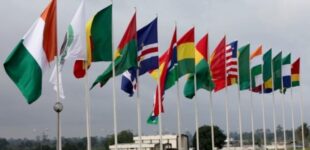


There are no comments at the moment, do you want to add one?
Write a comment